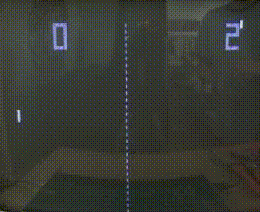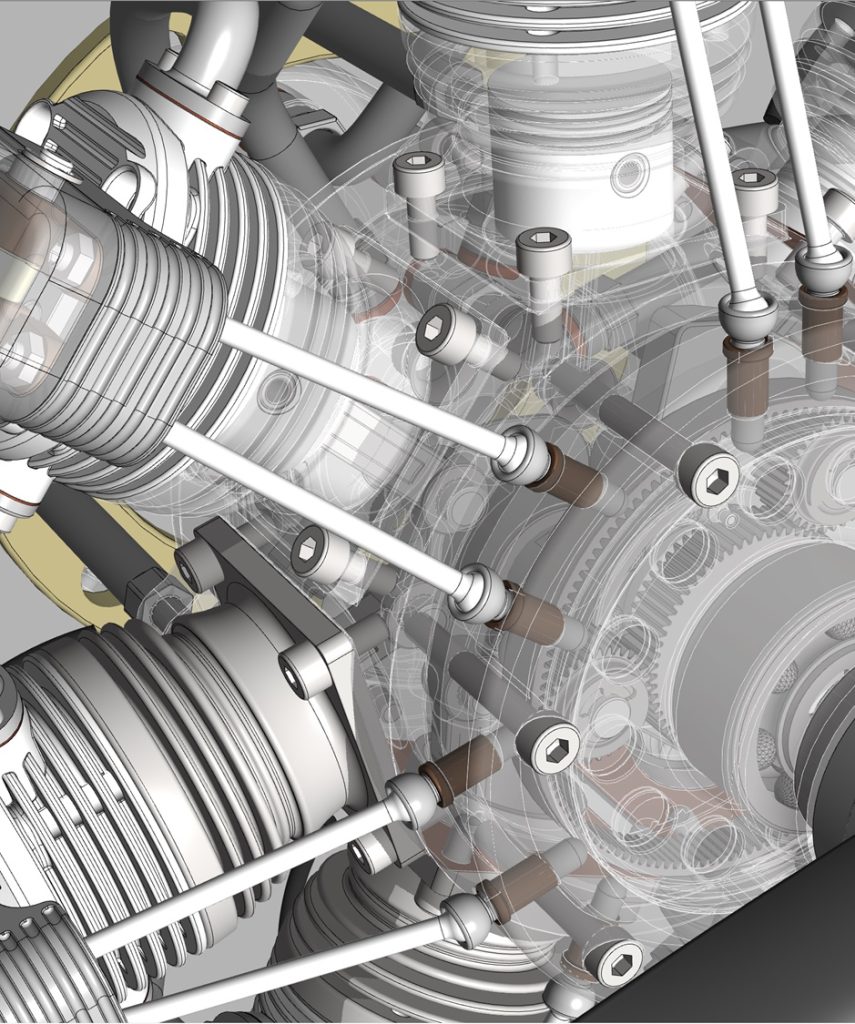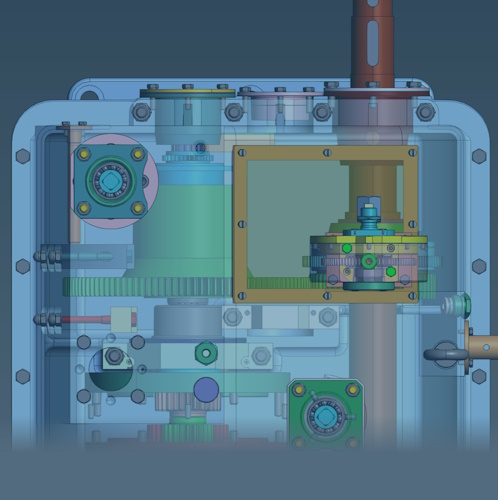I was just introduced to the HOOPS Luminate SDK from the folks at Tech Soft 3D, which caused a cascade of cogitations to commence careening around my poor old noggin…
I’m not a big player of computer games, if the truth be told, but I do love computer-generated graphics, and games have offered one way to observe the evolution of graphics technologies.
There were some very interesting precursor implementations in the 1950s and 1960s. For example, Ivan Sutherland invented the first computer-controlled head-mounted display (HMD) in 1966. By displaying two separate wireframe images—one for each eye—the viewer was presented with a 3D stereoscopic image. As an aside, the heavy hardware required to support the display and tracker was known by its creators as “The Sword of Damocles” because of the potential danger if it were to fall upon the wearer.
The first time the unwashed masses (of which I am a proud, card-carrying member) became aware of computer graphics was with the release of the arcade video game Pong. I don’t know about you, but I must admit that I find watching this game to be mesmerizing to this day.

Pong was the first time many people saw computer graphics in action (Source: Wikipedia/Pong74ls)
I’m sorry… what were we talking about.. it seems I just lost an hour watching the above graphic. Oh yes, I remember… sometime around the early 1980s, I acquired an Atari home computer based on the 8-bit 6502 microprocessor from MOS Technology. I’m ashamed to admit I no longer remember which Atari model I owned. What I do remember is working my way through a book that taught me how to create, display, and rotate 3D wireframe models on the screen. The programs that did this were all captured in assembly language, which took countless hours of programming followed by seemingly endless hours of debugging, but the thrill of seeing a 3D wireframe object tumbling in the center of the screen made all the drudgery worthwhile.
Later, I got to play with sprites, which are two-dimensional bitmaps that are integrated into a larger scene. These days, sprites can be very sophisticated. Back then, however, I think we were restricted to 8 x 8 pixels with a very limited color map, but we still considered our creations to be wonderful.
Many early games had only a single screen of simple graphics. One example that springs to mind is Pac-Man, which was released in 1980. The next step up the graphics ladder came in the form of flip-screen graphics, in which a game environment was divided into multiple pieces (screens). When the player/character “ran” into one of the screen’s edges, the picture abruptly “flipped” to the next screen.
One approach to add more interest was the introduction of a side-scrolling (horizontally-scrolling) background image/world through which the player/character moved. A classic of this ilk was Super Mario Bros. A variant on this technique was the use of a vertically scrolling background. I cannot remember its name, but one of my friends had an awesome (for the time) vertical scroller that involved weird alien plants attached to rock walls that scrolled by on either side of the screen.
A couple of years ago, I penned my Speaking in [Archaic] Tongues (BASIC) blog in which I mentioned a full-sized Commodore 64 Reboot called THEC64 intended for 1980s retro-gaming. I couldn’t help myself. I bought one as soon as they became available. This bodacious beauty comes pre-loaded with 64 classic games (plus you can program your own games and applications in BASIC). I love it!
I remember when the Myst puzzle adventure game came out in 1993 (O-M-G. That’s 31 years ago!). To overcome the limitations of the graphics cards at that time (kids today wouldn’t believe how rudimentary things were back then), Myst’s creators pre-rendered fantastic background imagery. The gameplay consisted of a first-person journey through this pre-rendered world, interacting with objects and clicking on the edges of the screen to be taken to the next scene. All I can say is that the imagery was awesome for the time; also, for Myst aficionados. I highly recommend the 2020 real-time 3D graphic release for use with Meta Quest Headsets.
All the cogitations and ruminations above were sparked by the fact that I was just chatting with the folks from Tech Soft 3D. Founded in 1996, these guys and gals don’t provide graphical applications themselves; instead, they provide a suite of world-leading software development kits (SDKs) that are used to power engineering applications from their 650+ partners. These SDKs include the following:
HOOPS Exchange: Provides fast and accurate import of 30+ CAD formats without depending on any CAD system.
HOOPS Visualize: The graphics engine that powers hundreds of world-class engineering apps.
HOOPS Communicator: A graphics engine optimized for web browsers and engineering workflows.
HOOPS Publish: 3D data publishing toolkit that provides 3D model export for native 3D PDF, HTML, and standard CAD.
I am in awe of the imagery generated by HOOPS Visualize, which is the 3D graphics SDK behind engineering applications from market leaders like Hexagon, Trimble, Ansys, SOLIDWORKS, Autodesk, and many more.

Images like this generated by HOOPS Visualize take my breath away (Source: Tech Soft 3D)
The ability to make some of the elements forming the model transparent so you can see what’s going on inside is awesome. And the fact that you can manipulate and render 3D models of this ilk in real-time defies the imagination.
“How much better can things get?” I hear you cry. Well, quite a lot, as it happens, because the chaps and chapesses at Tech Soft 3D have just announced their latest and greatest SDK offering in the form of HOOPS Luminate, which provides photo-realistic and advanced real-time rendering.
HOOPS Luminate equips developers with a comprehensive set of tools and features that empower them to create visually stunning and interactive 3D applications across different platforms and industries and bring them to market faster. Key features include the following:
Optimum Balance of Performance & Quality
HOOPS Luminate offers high performance in rasterized and ray-traced rendering, thanks to proprietary data organization algorithms and techniques, which – combined with its hybrid rendering technology – can produce high-quality images at interactive rates.
Advanced Materials Library
The HOOPS Luminate Materials Library contains hundreds of proprietary, highly customizable realistic materials. These materials are based on physical parameters and are ready for rendering. The library includes many categories: stone, wood, concrete, fabrics, metals, jewelry, and more.
Advanced Lighting Techniques
HOOPS Luminate’s rendering technologies can realistically simulate all complex light interactions: it can produce highly realistic reflections, refractions, soft shadows, caustics, and ambient occlusion, thanks also to sophisticated techniques like global illumination.
As an example of the sort of image you can create with HOOPS Luminate, cast your orbs over the following image while imagining me squealing in excitement and gasping in delight.

I’m too young for all this excitement (Source: Tech Soft 3D)
HOOPS Luminate provides a highly customizable rendering pipeline tailored for superior graphics quality with different rendering types. It includes advanced technologies and proprietary solutions to ensure high performance and state-of-the-art quality in both rasterization and ray tracing. With a single C++ application programming interface (API), it can share the same data for both real-time and ray tracing renderings and—thanks to its native hybrid rendering mode—can combine them both concurrently in the same view. It has a multi-threaded Unicode engine and is available for Windows, macOS, and Linux.
I’m thinking of the state of computer-generated graphics as I commenced my degree at Sheffield Hallam University in those days of yore we used to call 1975. If I were to summarize that state-of-play in a one-word crunchy nutshell, that word would be “nonexistent.” At that time, had I—or anyone else in the world—been presented with an image like the one shown above, we would have assumed it was a photograph. There would have been no way you would have been able to convince anyone it was generated by a computer.
All I can say is “I love this stuff!” How about you? Do you have any thoughts you’d care to share on anything you’ve read here?





Sadly there is no such thing as a photo-realistic radial aircraft engine without a coffee can suspended under it to catch the oil that drips out due to differential expansion.
This is a motor from the celestial realms!
I’ll ask them to add dripping oil